Solar Decorative Lights: Setting the Mood Outdoors
Why Solar Decorative Lights Are a Hit
Solar string and decorative lights are a favorite for homeowners who want to add charm to their outdoor spaces without fussing over wires or electric bills. These twinkling lights create a cozy vibe for evenings on the patio or festive holiday setups. But many wonder: are solar decorative lights bright enough to make a real impact? Let’s dive into how they work, their brightness, and how to use them effectively to light up your nights.
-6-2-1024x400.webp)
Functional Brightness vs. Ambient Glow
When it comes to outdoor lighting, not all lights serve the same purpose. Understanding the difference between functional brightness and ambient glow helps set expectations:
- Functional Brightness: This is about illumination—think floodlights or pathway lights designed to make spaces safe and visible, typically 500–2,000 lumens.
- Ambient Glow: Solar decorative lights focus on atmosphere, offering a soft, warm light (10–100 lumens) to enhance mood rather than fully light an area.
- Key Difference: Functional lights prioritize visibility and security; solar decorative lights aim to create a welcoming, aesthetic vibe.
Knowing this distinction helps you decide where solar string lights fit in your setup—perfect for mood, not for heavy-duty lighting tasks.
How Bright Are Solar Decorative Lights?
Brightness, measured in lumens, varies widely between solar decorative lights and standard outdoor lamps. Here’s a quick comparison:
- Solar String Lights: Typically 5–50 lumens per bulb, with a strand of 20–50 bulbs totaling 100–500 lumens. They’re designed for subtle glow, not intense light.
- Solar Decorative Lanterns: Range from 20–100 lumens, ideal for accentuating tables or garden corners.
- Standard Outdoor Lamps: Pathway lights hit 100–300 lumens, while floodlights or spotlights can reach 700–2,000 lumens for security or task lighting.
- Takeaway: Solar decorative lights are dimmer by design, focusing on charm over utility. If you need visibility, they won’t cut it alone.
For context, a single solar string light bulb might be as bright as a candle, so they’re best for creating a soft, inviting atmosphere rather than lighting up a whole yard.
Where Solar Decorative Lights Shine
Solar decorative lights are versatile and work best in specific settings. Here are the top use cases:
- Patios: Drape string lights over railings or pergolas to create a warm, inviting space for dinners or gatherings. A 100-lumen strand adds just the right touch.
- Gardens: Hang solar lanterns or stake lights among plants to highlight features like flowerbeds or trees, adding depth without overpowering.
- Holiday Decorations: Wrap string lights around fences, trees, or porches for festive cheer. Models with color-changing or twinkling modes boost holiday spirit.
- Events: Use them for parties or weddings to set a magical mood. Combine with candles or fairy lights for extra flair.
These lights are perfect for low-key ambiance but fall short for tasks like reading or illuminating large areas, so plan your setup accordingly.
Mixing with Spotlights for Balanced Lighting
To get the best of both worlds—ambiance and functionality—pairing solar decorative lights with brighter spotlights is a smart move. Here’s how to make it work:
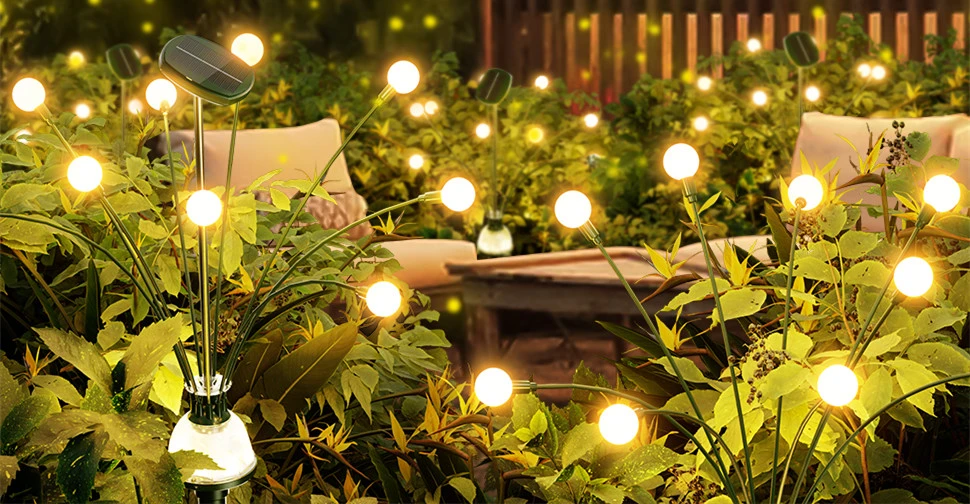
- Layer Your Lighting:
- Use solar string lights for mood along fences or overhead.
- Add 300–500-lumen solar spotlights to highlight pathways or entrances for safety.
- Include motion-sensor floodlights (700+ lumens) for security in key areas like driveways.
- Placement Tips:
- Position decorative lights in visible, aesthetic spots (e.g., wrapped around a tree).
- Place spotlights in functional areas, like near steps or dark corners.
- Balance Brightness: Keep decorative lights dim (10–50 lumens per bulb) to avoid clashing with brighter spotlights, ensuring a cohesive look.
- Power Management: Ensure all lights get enough sun exposure for charging. Larger solar panels or higher-capacity batteries (1,800 mAh+) help spotlights last longer.
This combo creates a welcoming vibe while ensuring your space is safe and usable, especially for evening gatherings or late-night walks.
Things to Watch Out For
Solar decorative lights aren’t perfect, and a few limitations can affect their performance:
- Weather Dependency: Cloudy days or shaded areas reduce charging efficiency, dimming the glow or shortening runtime (typically 6–8 hours).
- Low Brightness: Their soft light (10–100 lumens) won’t illuminate large spaces or support tasks like outdoor cooking.
- Durability: Cheaper models may not be weatherproof (look for IP65 or higher) and can fade or break in harsh conditions.
- Battery Life: Smaller batteries (600–1,200 mAh) may not last through long winter nights, so check specs before buying.
Regular cleaning of solar panels and choosing high-quality models can help avoid these pitfalls and keep your lights twinkling.
Conclusion: Perfect for Ambiance, Not Illumination
Solar decorative lights are a fantastic way to add charm to your outdoor spaces, whether it’s a cozy patio, a vibrant garden, or a festive holiday setup. With their soft 10–100-lumen glow, they’re built for atmosphere, not heavy-duty illumination, making them ideal for parties or relaxed evenings. For the best results, mix solar string lights with brighter spotlights to balance mood and functionality. By choosing models with decent batteries (1,800 mAh+), placing them in sunny spots, and maintaining them well, you can create a stunning outdoor vibe that lasts through the night—just don’t expect them to light up your entire yard on their own.

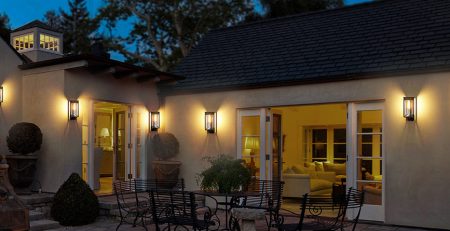
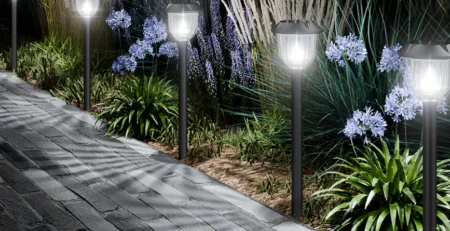
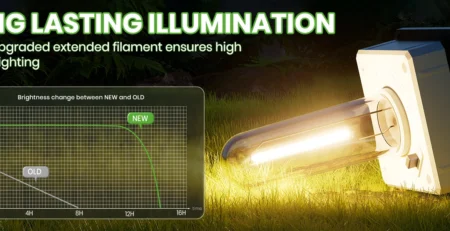
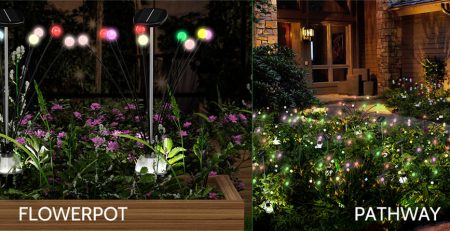
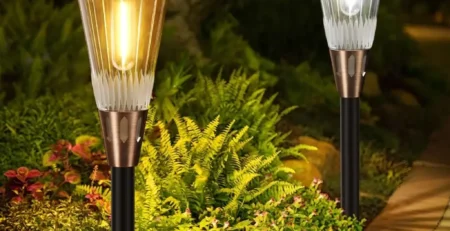
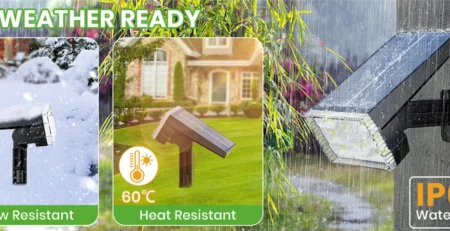
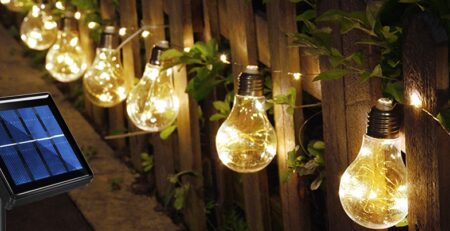
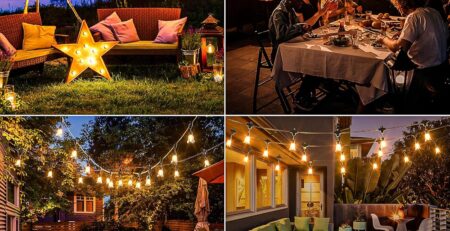
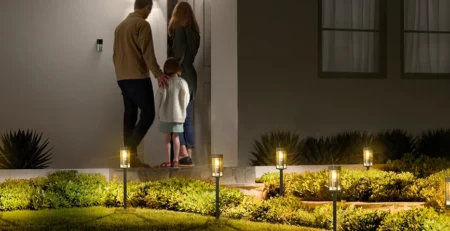
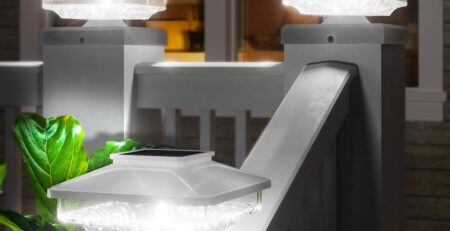
Leave a Reply